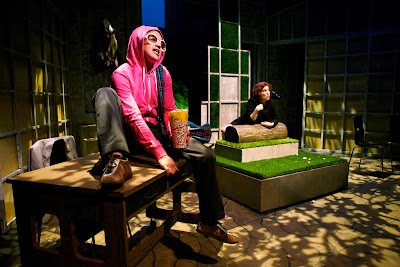(Gross!)
Recently I was talking with a student about this site, and she said she understood the name "The Split End": that I'm often "split" about how I feel about a show or a review and feel compelled to write more -- if not to resolve a contradiction, then at least to explore it further.
But the name is also pretty dang girly and silly.
I've been thinking for a while about changing it to reflect how I feel my writing and my ambitions have evolved -- in other words, to make it a little more professional. But the best I've come up with is... "Criticulous." Thankfully, my partner vetoed that one. So I'm going with... Critonkulous! Just kidding.
But this is why I need your help.
Readers, do you have any ideas as to what I should call this site? I'm looking for something that would suggest theater and criticism, of course, but more importantly questioning, second-guessing, doubting -- what I'm really all about.
I hope this will be part of a broader effort to reconceptualize my web presence. Yes, I just said that. Stay tuned. Until then, please comment below!







.jpeg)




